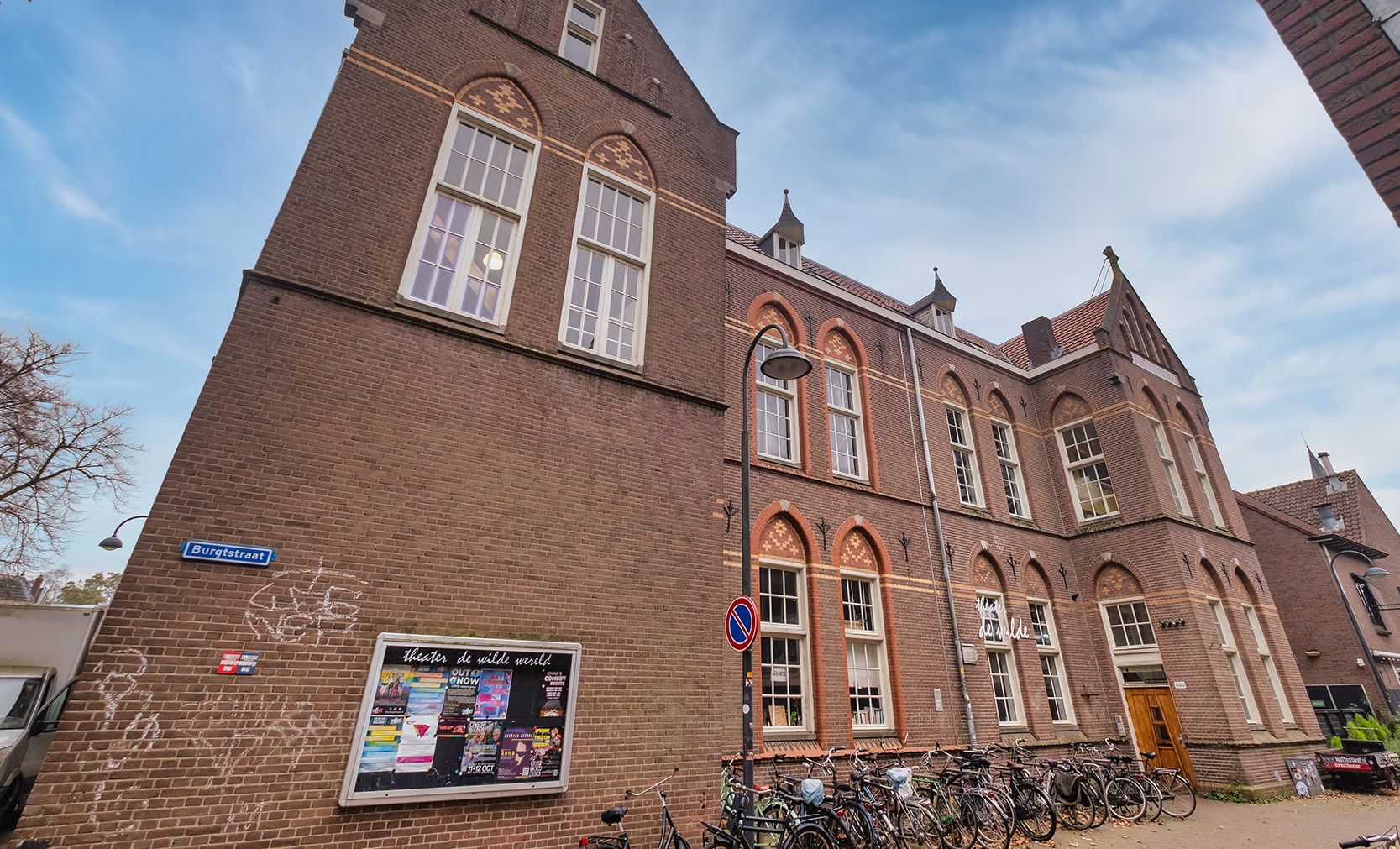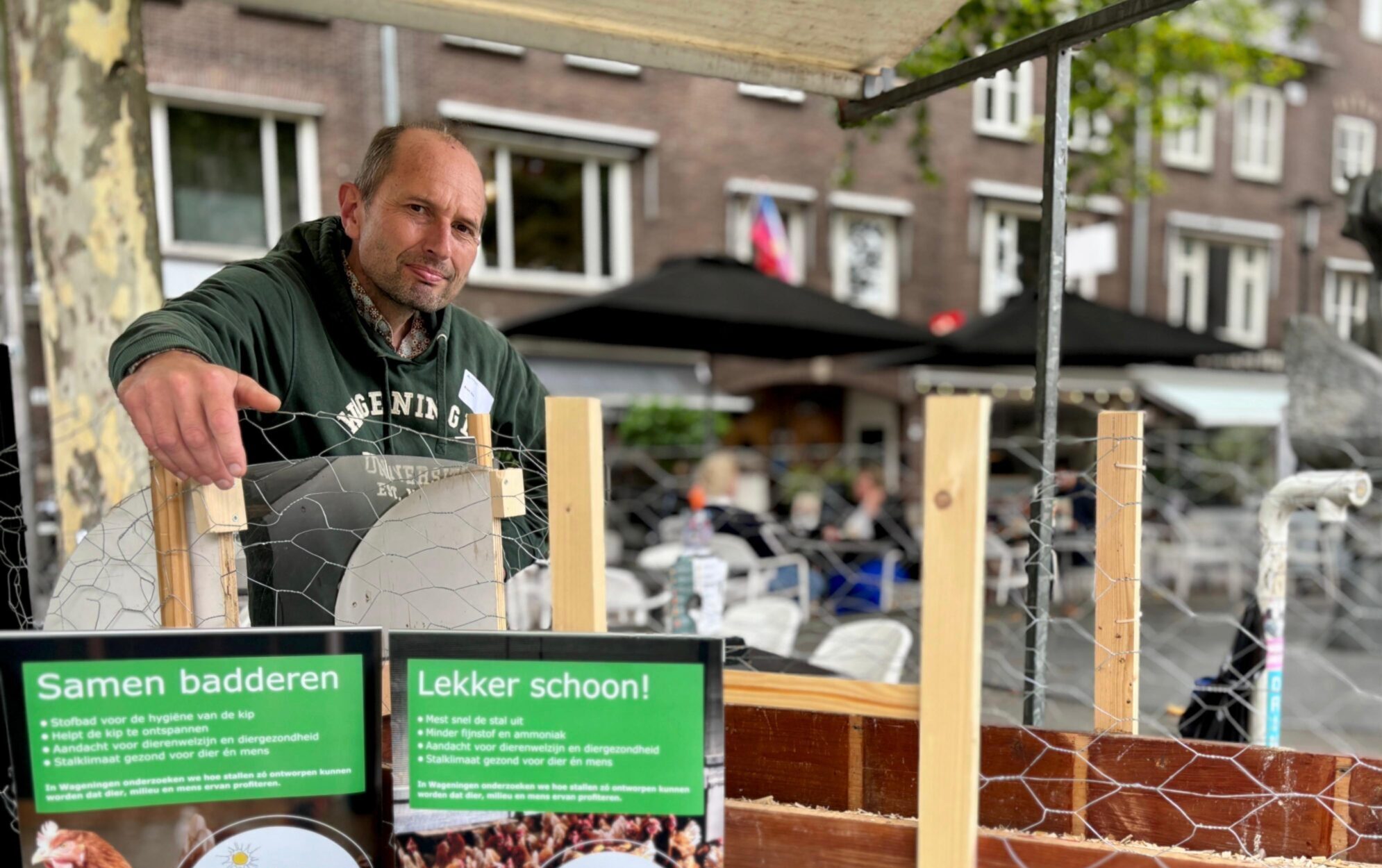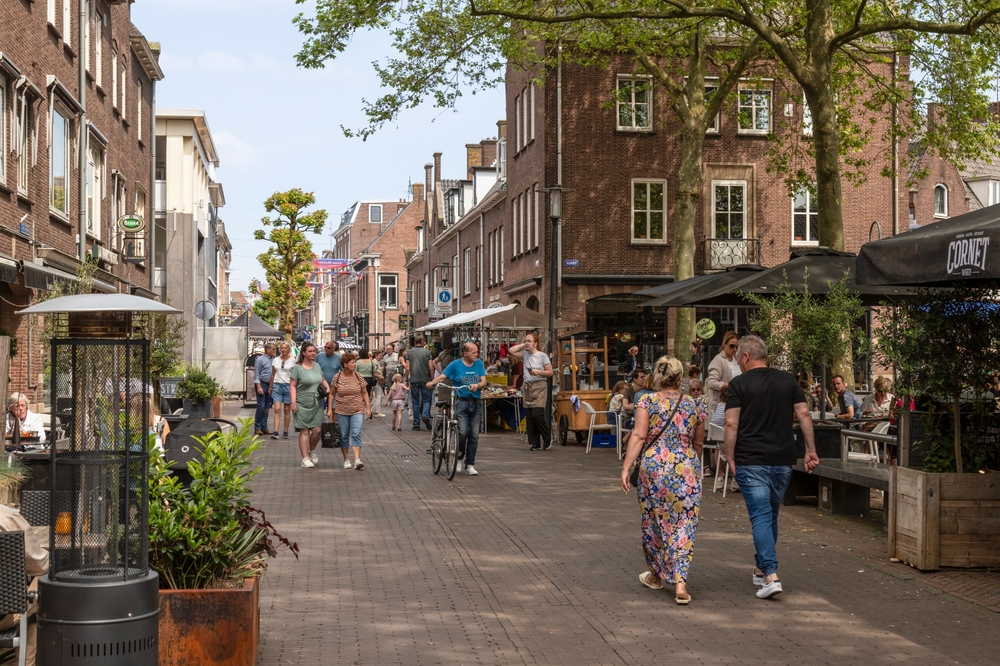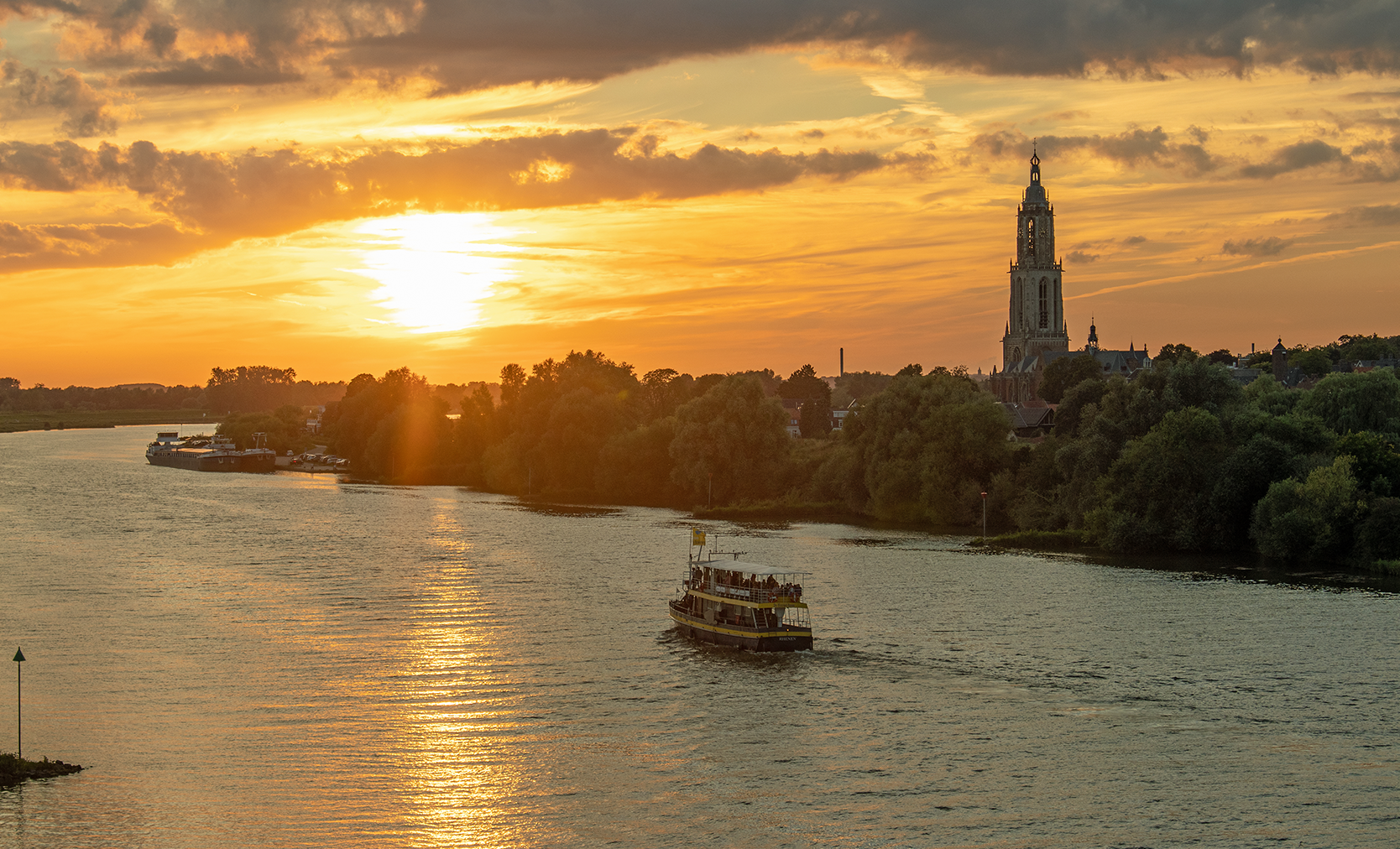Your house is more than the place where you happen to live. Student houses and residential communities often have their own character. How does that happen? And how does the house influence its residents? Judith Rommens (International Development Studies) wrote her thesis about the house she lived in for eight years – De Wilde Wereld – from the perspective of the building itself.
It had to be done at some point. One day, Rommens plucked up enough courage to start tidying up the large wooden cupboard in the living room of H15/B5. As she emptied it out, she came across all sorts of things. CDs with music collections from years ago, games that can now be considered vintage, and old electronic gear.
‘I thought: where did all these things come from?’, Rommens recalls. ‘Who brought them here? And how long have they been here?’ These questions were the start of a quest to find out about the history of De Wilde Wereld. ‘I became very curious about the people who used to live here. Would I have had anything in common with them, apart from a shared address?’ The interaction between the house and its residents is the central question in Rommens’ final thesis. Did the ideals and the lifestyle of the first residents determine the character of the house? And inversely: are people changed by the house they live in?
Later generations increasingly talked about the house as if it was a person
‘At first, I wanted to study that in several residential communities, but that was too broad a topic. If I wanted to achieve some depth, I needed to focus on one house.’
Rommens found her supervisor through the post that was still arriving for former residents: associate professor of Rural Sociology Joost Jongerden was one of the first residents of De Wilde Wereld. Rommens managed to contact a further 25 former residents through his contacts and her own network.
Squatters’ movement
Interviews with those ex-residents provided a good picture of the house over the years. For additional information, Rommens delved into various archives and her own diaries. ‘De Wilde Wereld has its own sizable archive,’ says Rommens. ‘Piles of folders full of documents, handwritten minutes of the first meetings in the 1980s – really nice to read. I also found posters from the time of the protest movement and some strange objects like a glass full of cigar butts.’
The squatters’ movement left its mark on the house too. ‘Values like community spirit and freedom were very important. They were passed on to the next generations, only not always quite the way the first residents had in mind.’
‘For example, the first generation believed in self-sufficiency and thought the residents should do all the maintenance on the house themselves. But that proved difficult: according to ex-residents, there was endless whingeing about the jobs needing doing, and less and less maintenance was carried out. Nevertheless, the current residents still mention self-sufficiency as a value they hold. But they tend to see it as meaning: if you want something done, you’ve just got to do it yourself.’
The house speaks
‘I thought it was funny how later generations increasingly talked about the house as if it was a person. As if it had its own personality and did things – like losing things or giving them back.’ That was one of the reasons that Rommens decided to let the house speak for itself in her thesis. For example: ‘Every day my residents turn me into their house again by experiencing me. I’m the stage on which their daily lives are performed.’
The house as an entity is a bit like Frankenstein’s creature, says Rommens. ‘The first residents constructed the skeleton; the next generations covered it in bits of life. Some bits die off, others become part of the house, and eventually the creature comes to life. A communal house is a dynamic system that is constantly developing. Both the house itself and the things inside it change all the time, as does the culture of the house and the ideals harboured there.’
The house culture that evolves doesn’t suit everyone. ‘When I was living there, for instance, you didn’t have much personal space. You could withdraw if you liked, but it was the norm to hang out together. I didn’t mind that, but I can understand that it’s not everybody’s cup of tea.’ The advantage of communal living, in Rommens’ view, is that your social skills increase enormously. ‘You learn to get on with all kinds of people, making decisions together and not always getting your own. Those are skills that stands you in good stead all your life.’
De Wilde Wereld is a building in the middle of Wageningen, on the corner of Herenstraat and Burgtstraat. Twelve people live there in three groups, there is a theatre, a record shop, and rooms for working and cultural activities, and it is the headquarters of the LGHBTQ+ association Shout.
It was built in 1905 as a Catholic girls’ school. Over the years, several kinds of school were housed there, until the badly maintained building fell into disuse in 1985. A group of Wageningen squatters saw its potential. After years of squatting, they were looking for legal accommodation in which to combine living with work and cultural activities. A sympathetic councillor convinced the municipal council of the merits of the plan.
Renovations started in 1985, and a year later the first residents moved in and community life started, based on the squatters’ ideals such as emancipation, freedom and community spirit. That moment is where Rommens’ study of the personality of the house begins.

 De Wilde Wereld now. Text Coretta Jongeling. Photo Guy Ackermans
De Wilde Wereld now. Text Coretta Jongeling. Photo Guy Ackermans 

